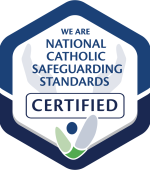Home » Indicators of abuse & neglect of vulnerable persons
The presence of indicators of abuse does not prove a vulnerable person has been or is being abused.
Indicators of abuse provide guidance on possible concerns and potential causal relationships. They should act as a trigger, encouraging people to consider whether an injury, behaviour or disclosure raises the possibility that a vulnerable person may be at risk of significant harm from abuse or neglect.
Some indicators are sufficient as single signs to prompt you to make a report to the relevant authorities. Other indicators are meaningful when they co-exist with other indicators.
The absence of indicators does not necessarily mean a vulnerable person is safe. Some maltreated vulnerable persons will not display any noticeable symptoms. Equally, many of the indicators listed may be the consequence of other factors aside from abusive or neglectful care.
Vulnerable persons who have experienced abuse will often experience more than one type of maltreatment. For example, there is a strong propensity for carer neglect to co-exist with psychological or emotional abuse.
Indicators of abuse need to be considered in the context of a vulnerable person’s circumstances and other vulnerabilities.
Interpretation of indicators always involves adopting the vulnerable person’s perspective and placing the individual at the centre of consideration. The focus is on the possible consequences of the actions or inactions of the vulnerable person’s parents, carers or other responsible persons.
It is important to discuss your concerns for a vulnerable person with a person experienced with and trained in interpreting the indicators of abuse. As a diocesan worker or member of our faith communities or parent or carer of a vulnerable person in receipt of a diocesan service, you are able to contact the Office of Safeguarding to discuss your child related concerns:
P: 4979 1390 (Mon-Friday 9am-5pm)
The following section provides detailed information on the indicators of abuse of vulnerable persons, described in terms of the five generally used classifications of abuse, with a preliminary section on the factors that make vulnerable persons at higher risk of abuse. Each sub-heading has detailed information when you expand the relevant classification.
Physical indicators:
Victim behavioural signs:
Perpetrator indicators:
Physical indicators:
Victim behavioural signs:
Perpetrator Indicators:
Physical indicators:
Victim behavioural signs:
Perpetrator indicators:
Physical indicators:
Victim behavioural signs:
Perpetrator indicators:
Physical indicators:
Victim behavioural signs:
Perpetrator indicators:
Office:
50 Crebert St, Mayfield
PO Box 152, Mayfield NSW 2304
P: 02 4979 1390
E: childprotection@mn.catholic.
www.officeofsafeguarding.org.au
